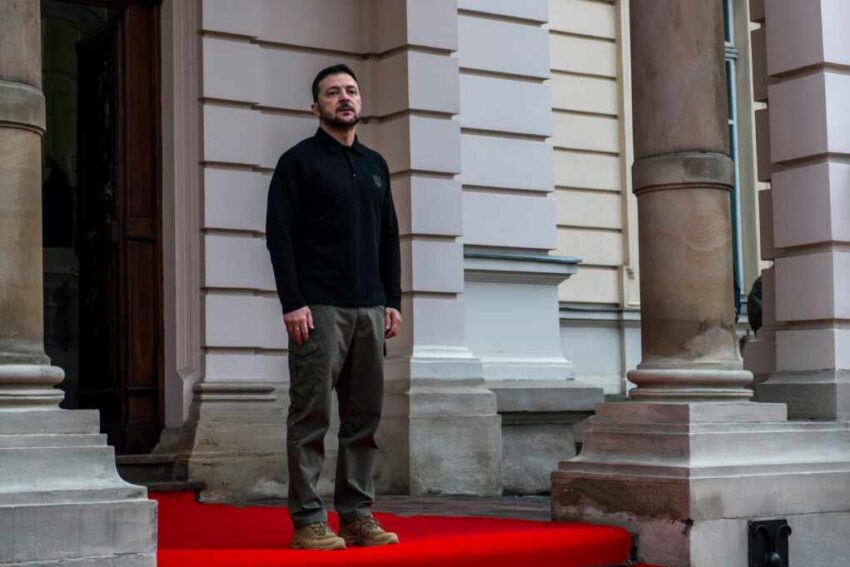A deadly “double-tap” drone strike on a civilian bus near Kherson has drawn condemnation from Ukrainian officials and, according to diplomatic observers, is likely to increase pressure ahead of anticipated Trump–Putin ceasefire talks while challenging existing positions on territory and security guarantees.
Story Snapshot
- Russia’s overnight strikes killed at least eight civilians and injured dozens, including a two‑stage attack that hit a Kherson bus and then responders.
- Ukraine reported 47 Shahed drones and two missiles launched in 24 hours as casualties mounted in Kherson and Donetsk.
- Trump–Putin talks on a potential ceasefire are reportedly imminent, while Kyiv rejects any territorial concessions.
- Western reports outline Russian demands tied to recognizing Crimea and Donetsk/Luhansk, with significant ambiguity around withdrawals elsewhere.
Escalation on the ground: civilian bus hit, responders targeted
Ukrainian authorities reported a Russian drone strike on a civilian bus in the Kherson area that killed two and injured 19, followed by a secondary strike that wounded three police officers during recovery operations. Human rights monitors note that the “double-tap” tactic—hitting an initial site and then first responders—significantly increases civilian risk and places additional strain on local emergency services. Broader overnight attacks killed at least eight civilians and injured 24 across multiple sites, with additional fatalities reported in Donetsk during the same period.
Ukraine’s Air Force said Russia launched 47 Shahed drones and two missiles in a 24‑hour window, claiming many interceptions but acknowledging lethal strikes that penetrated defenses. Kherson, a partially occupied oblast north of Crimea, has faced repeated targeting of civilian areas and infrastructure since the full‑scale invasion began. The pattern aligns with prior Russian employment of Shahed‑type drones for sustained pressure on urban areas and critical facilities despite ongoing air defense efforts.
Diplomatic clock: reported Trump–Putin talks amid hardened red lines
Reports indicate President Trump and President Putin agreed to hold talks “in the coming days,” following a meeting between Trump envoy Steve Witkoff and Putin. Trump has pushed compressed timelines for a ceasefire, backed by potential sanctions leverage, while seeking a high‑level channel to test terms. Ukraine risk and diplomacy experts at the Institute for the Study of War (ISW) say the intensifying strikes add urgency to ceasefire discussions but may also complicate negotiations, as civilian casualties could harden positions in Kyiv and European capitals before formal talks begin.
President Zelensky publicly rejected territorial concessions, emphasizing a “dignified peace” and reliable security guarantees. According to analytical summaries, Russia’s reported tasks include Ukrainian concessions in Donetsk and Luhansk and recognition of Crimea, paired with a freeze along other front lines. Security analysts from the Atlantic Council note that conflicting Western reports have created uncertainty over whether Russia has offered to withdraw from parts of Kherson or Zaporizhzhia, suggesting that public signaling may be moving faster than confirmed, verifiable proposals.
Competing proposals: territory, guarantees, and NATO pathways
Ukrainian and European officials reportedly presented a counterproposal to U.S. counterparts after Putin’s terms surfaced through backchannels. European leaders have floated an immediate Russian truce combined with a pathway to NATO membership or binding security guarantees for Ukraine, aiming to deter future aggression. Kyiv’s stance rejects land swaps that would normalize occupation, framing any settlement around sovereignty, deterrence credibility, and enforceable safeguards rather than cartographic compromises.
Analysts at the Institute for the Study of War note active Russian operations continue on fronts such as Lyman and around Toretsk, with localized shifts but no decisive breakthroughs. The battlefield flux feeds into diplomacy: Moscow seeks leverage through escalation, while Ukraine banks on Western backing and air defense resilience. Any ceasefire architecture that blesses territorial seizures risks precedent effects; conversely, failure to reach a truce prolongs attrition, economic damage, and civilian harm, particularly under “double‑tap” strike patterns.
What to watch: verification, enforcement, and constitutional guardrails
Verification and enforcement mechanisms will define whether any ceasefire is durable. Inspectable withdrawal clauses, no‑strike zones, and rapid sanctions snap‑backs would be necessary to deter violations. For U.S. policymakers, the core debate centers on defending international norms without underwriting endless war or accepting faits accomplis. As talks advance, Americans should scrutinize any deal that weakens deterrence, rewards aggression, or blurs congressional oversight on sanctions, aid, or commitment of U.S. resources.
Sources:
Timeline of the Russian invasion of Ukraine (1 June 2025 – present)
Russian Offensive Campaign Assessment, August 9, 2025
Timeline of the Russian invasion of Ukraine
Russian Offensive Campaign Assessment, August 8, 2025
Trump sets deadline for Putin talks on ceasefire in Ukraine — what he promised and where it stands
Click this link for the original source of this article.
Author: Editor
This content is courtesy of, and owned and copyrighted by, https://republicanpost.net and its author. This content is made available by use of the public RSS feed offered by the host site and is used for educational purposes only. If you are the author or represent the host site and would like this content removed now and in the future, please contact USSANews.com using the email address in the Contact page found in the website menu.





